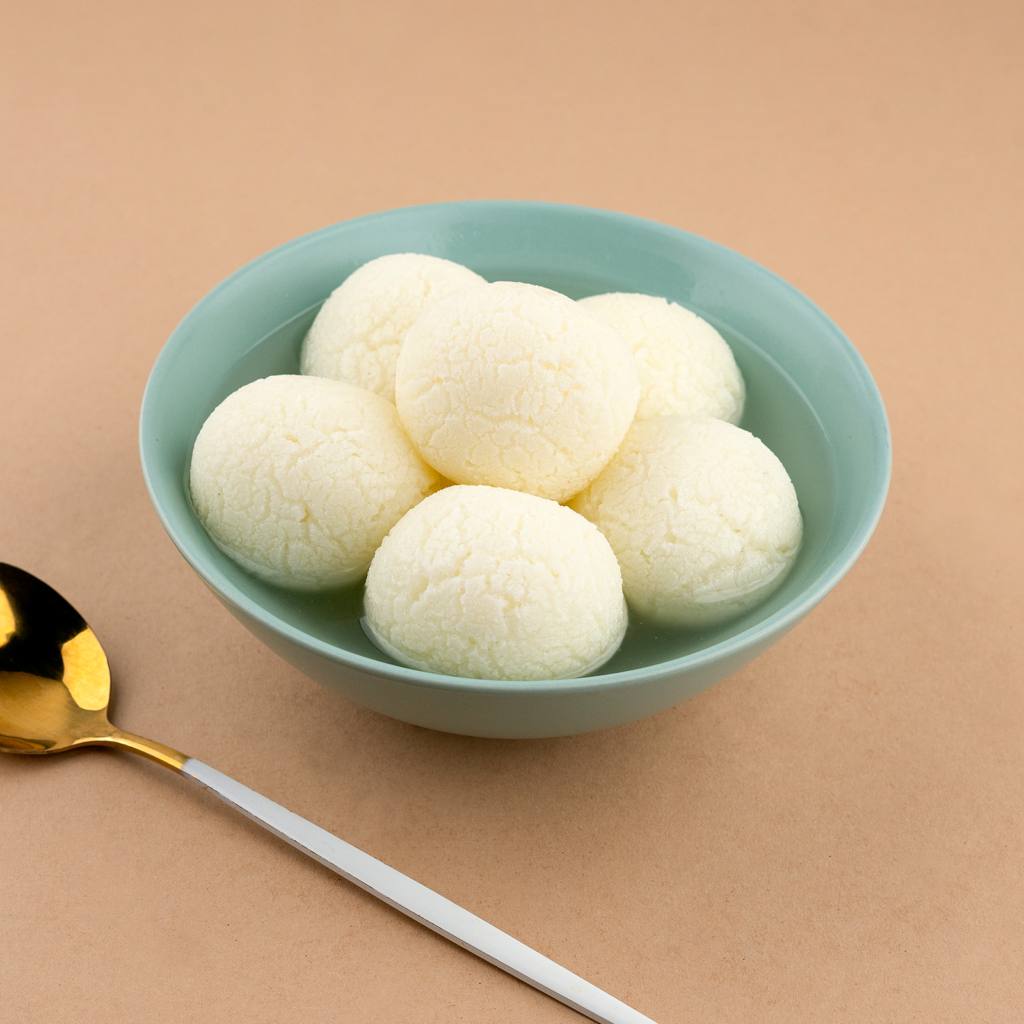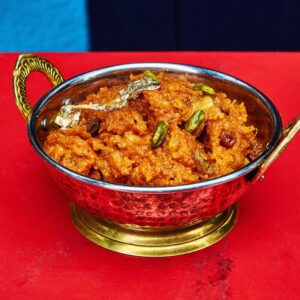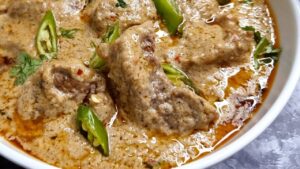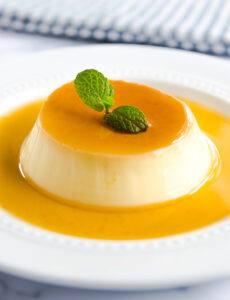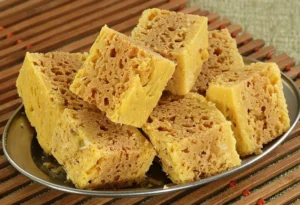Short Description:
Rasgulla is a beloved Indian dessert made from soft, spongy balls of chenna (Indian cottage cheese) simmered in light sugar syrup. It’s juicy, mildly sweet, and famously airy — a delicacy that’s earned global recognition.
📊 Recipe Details
-
⭐ Rating: 9.6/10
-
🧠 Difficulty Level: Medium
-
💰 Budget: $3 – $5 USD
-
⏱️ Cooking Time: ~50 minutes
-
🍽️ Category: Vegetarian
-
🔥 Meal Type: Dessert / Festive Sweet / Snack
-
👥 Serving Size: 4–5 persons (~12 rasgullas)
🧪 Nutrition Facts (Per Piece)
-
🍛 Calories: ~150 kcal
-
💪 Protein: ~4g
-
🥓 Fats: ~5g
-
🍞 Carbohydrates: ~22g
🛒 Ingredients
✅ For Rasgullas:
-
1 liter full-fat milk
-
2–3 tbsp lemon juice or vinegar (diluted in 2 tbsp water)
-
1 tsp semolina (sooji/rava) – optional, helps bind
-
1 tsp all-purpose flour (optional)
✅ For Sugar Syrup:
-
1.5 cups sugar
-
4 cups water
-
3–4 cardamom pods
-
A few drops of rose water or kewra water (optional)
👨🍳 Step-by-Step Instructions
🥛 Step 1: Make Chenna (Paneer)
-
Boil milk in a heavy pan. Once it comes to a boil, turn off the heat.
-
Add diluted lemon juice gradually and stir until the milk curdles.
-
Strain the curdled milk in a muslin cloth. Rinse under cold water to remove the sourness.
-
Hang the cloth and let it drain for 30–40 minutes (chenna should be moist, not dry).
🍥 Step 2: Knead the Chenna
-
Place chenna on a plate. Add semolina/flour (if using).
-
Knead with the heel of your palm for 8–10 minutes until smooth and slightly greasy.
-
Divide into 12 equal portions and roll into crack-free balls.
🍯 Step 3: Prepare Sugar Syrup
-
In a wide, deep pan, mix sugar and water. Add cardamom and bring to a boil.
-
Once boiling, drop rasgullas gently into the syrup.
-
Cover and cook on medium-high for 15–18 minutes. The rasgullas will expand.
🧊 Step 4: Rest & Serve
-
Once cooked, remove from heat and let them rest in the syrup to cool down.
-
Optionally, chill in the fridge before serving.
🍽️ Serving
-
Serves: 4–5 people
-
Best Served: Chilled or at room temperature
-
Pairs Well With: Other Bengali sweets, saffron syrup, or fruit-based desserts.
💡 Tips
-
Kneading is key — don’t skip or underdo it.
-
Don’t overcrowd the pot; rasgullas double in size.
-
Always use full-fat milk for best results.
-
Slightly undercook if you prefer softer texture.
-
Want flavor variations? Add saffron or rose water to syrup.
🧾 About the Dish
🌍 Origin & History
Rasgulla (also spelled Rasagola or Rasgolla) hails from East India, primarily Odisha and West Bengal, both of which claim its origin. It dates back to the 12th century in Odisha’s Jagannath Temple, later refined in Bengali households. It has since spread across the Indian subcontinent and internationally, becoming a symbol of Indian sweets.
🥄 Taste Profile
-
Texture: Soft, spongy, juicy
-
Flavor: Lightly sweet with floral undertones
-
Aroma: Mildly perfumed (especially if rose or cardamom is used)
📍 Where Can You Use This Recipe?
-
Indian festivals like Diwali, Durga Puja, or Holi
-
International fusion desserts (with cream, fruits, etc.)
-
Restaurant-style sweet platter
-
Gifts and celebration boxes
-
Diabetic-friendly versions (using sugar substitutes)
👤 Who Should Eat It?
-
Dessert lovers seeking something light & spongy
-
Vegetarians (completely eggless)
-
Families looking for a classic Indian sweet
-
Perfect for both festive and casual servings
🙅♂️ Who Should Avoid It?
-
Diabetics (unless using sugar-free syrup)
-
Those with lactose intolerance
-
People on strict low-carb diets
➕ Bonus Ideas
-
Stuff it! Add a small filling of saffron-soaked nuts inside the rasgullas.
-
Color it! Add edible food colors for party themes.
-
International twist: Serve with whipped cream, mango purée, or in parfaits.

